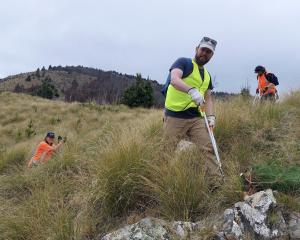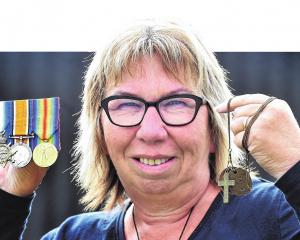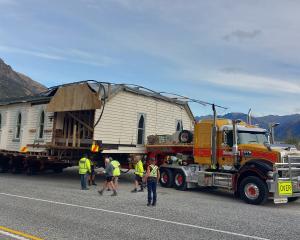Otago's dry conditions are being monitored closely by government and support agencies as the prospect of drought looms.
Weather statistics released yesterday by Niwa show Otago had some of the warmest and driest conditions in the country last year.
Niwa forecaster Chris Brandolino said by the end of the year soil moisture levels were below normal east of the divide in the South Island and the threat of drought was prevalent.
Many parts of Otago and South Canterbury had soil moisture levels at or about wilting point - when plants were no longer getting moisture from the soil.
Niwa's latest Hotspot report showed Otago soils were ''severely to extremely'' drier than normal for this time of year and showed a slight expansion of drier-than-normal soils, compared with this time last week.
''Hotspots exist in much of Canterbury and Otago as the coverage and size of the hotspot area has grown.''
This was highlighted during August and September, when most Otago towns went through a significant dry spell ranging from 17 days (Dunedin) to 31 days (Wanaka).
Otago Rural Support Trust co-ordinator David Mellish said with no significant rainfall since June in North and Central Otago and strong winds in recent weeks, there were big concerns about the impact on farmers.
''There is no sign of rain in the immediate future and river levels are low, putting pressure on irrigation and stock water.''
It meant farmers needed to be ''wary'' and look ahead, he said. Reducing surplus stock should be a priority, especially as the conditions would affect the supply of winter feed.
''Winter feed will probably be in short supply in August and September.''
Some farmers had weaned stock early and were already sending stock to Southland.
With irrigation under pressure it would mean some farmers would have only five weeks' supply of water in their dams and it was peak milk production time.
The trust, along with the Ministry for Primary Industries (MPI), local authorities and other related agencies were part of an informal email group keeping a watching brief on the situation, he said.
Any farmers feeling stressed about the conditions should get in touch with the trust or seek out information provided on the internet by Federated Farmers or Beef and Lamb, he said.
A spokeswoman for MPI said the government agency was monitoring the dry conditions in Otago closely.
The department was responsible for gathering information on rainfall, low rivers and lakes, and damage to crops and pasture to present to the Minister for Primary Industries.
The Government would then decide what support to provide to affected regions.
The Niwa figures showed Clyde and Alexandra had the hottest temperatures of the year nationwide and the two towns were also the driest, along with Middlemarch.
''It was a dry year for parts of Central Otago, with Cromwell and Lauder each recording approximately three-quarters of normal annual rainfall,'' Mr Brandolino said.
Middlemarch was the only recording station in New Zealand where the mean annual temperature was below average, he said.
''This suggests a prevalence of fine weather and clear skies at night during the year there, supported by rainfall data which shows Middlemarch received just two-thirds of normal annual rainfall,'' he said.
The Dunedin City Council is also asking residents to voluntarily conserve water because of warm weather, dry conditions and decreasing water levels in the city's tributaries.
Suggested conservation measures include watering gardens and lawns with watering cans, buckets or hand-held hoses instead of sprinklers.












